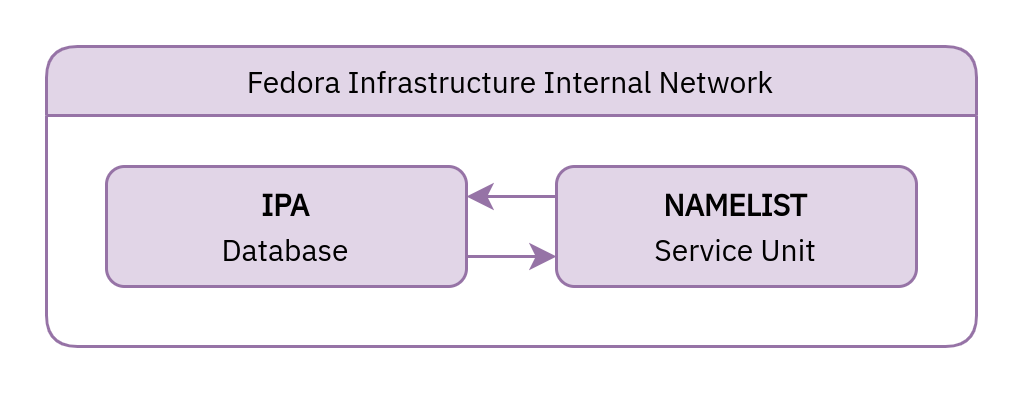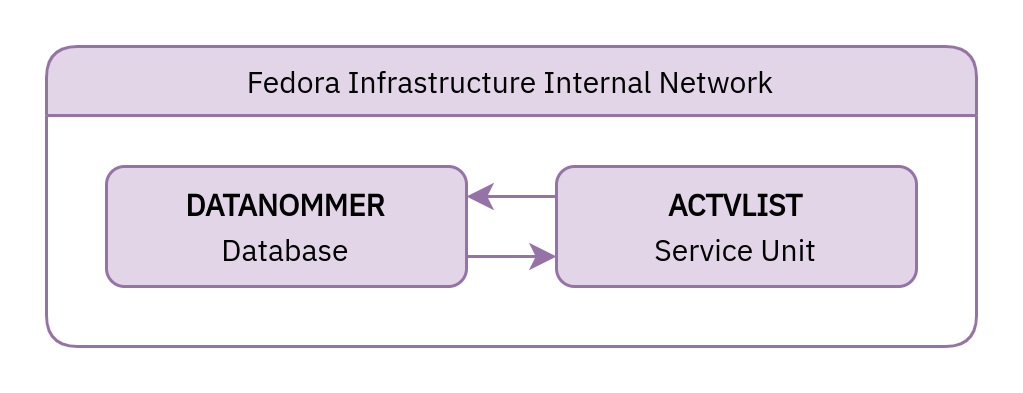Planned Statistics Sources
For obtaining the list of all usernames
In contrast to the earlier approach of gathering statistics for the active users available on FASJSON, this time around the statistics would need to be a lot more verbose and detailed. The core part that binds these statistics is the nature of the information collected as we would want to ensure that these activities are “objectively” perceived. What looks like a contribution to a certain person should look the same to others as well.
The list of the all available users has been planned to be resourced from the authentication database itself, instead of interacting with an HTTP API like FASJSON first and then letting FASJSON connect with the authentication database like we did before. This is to ensure that the scheduled runs for the process to fetch and update the list of users is not performance intensive and lesser time consuming in general than it was before.
For obtaining the list of active usernames
Fedora Messaging keeps track of the activities performed on a certain set of services deployed on the community infrastructure. As the act of making contributions would inevitably require the interactions with these services - it is very likely that the contribution activities would cause the service to publish a message on the Fedora Messaging bus, should the relevant schemas be configured correctly.
The historical collection of all messages published on the Fedora Messaging bus since the time of its deployment in production has been stored on a database service known as Datanommer and this is something that can be probed into directly without including another element in the system for facilitating the requests, which was previously done by Datagrepper.



